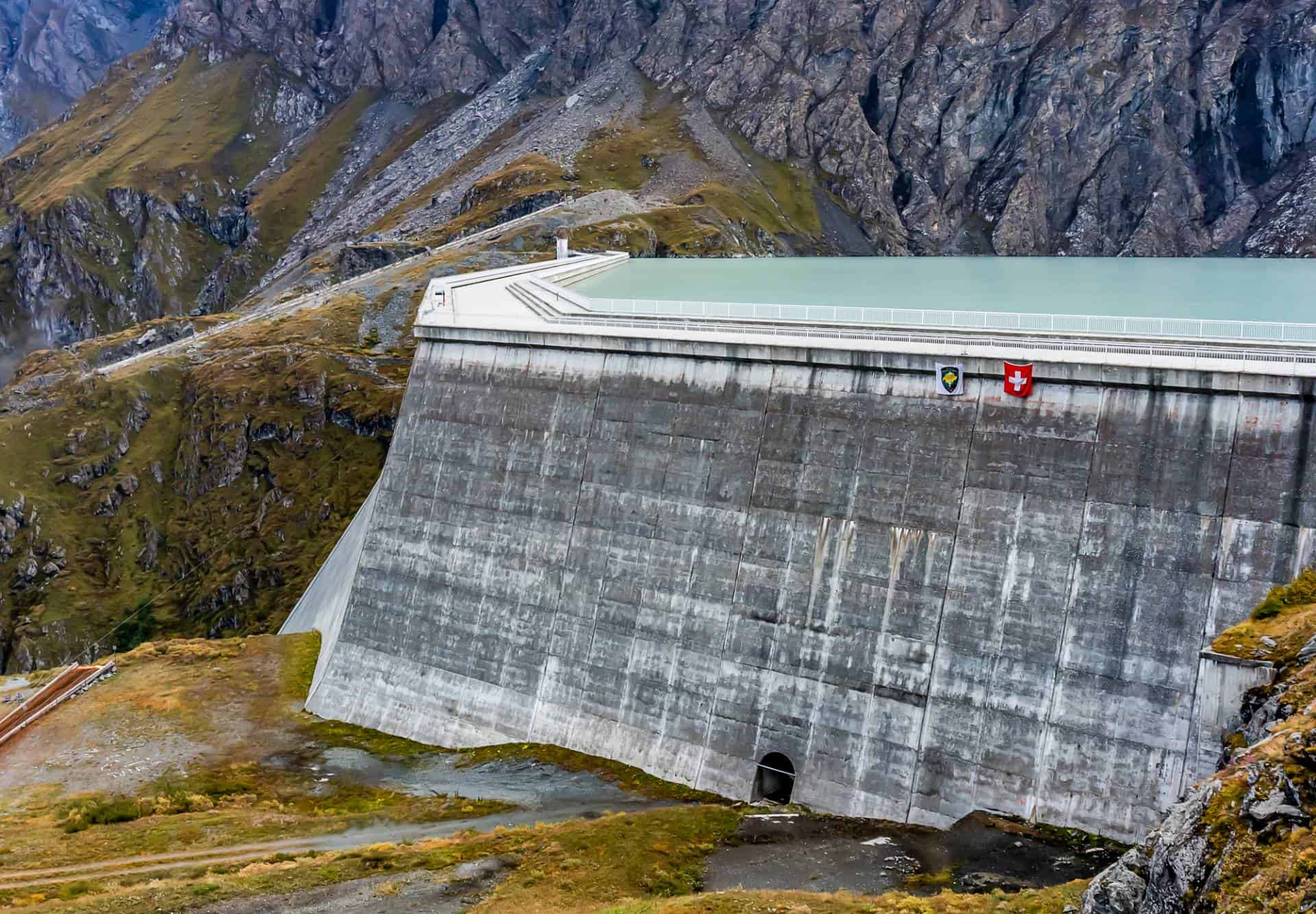
The Tallest Dam
The highest dam in Europe is the Grande Dixence Dam, also known as the Dixence Dam, located in Switzerland. The dam stands at an impressive height of 285 meters (935 feet) above the bedrock, making it not only the tallest dam in Europe but also one of the tallest in the world.
The Grande Dixence Dam is a concrete gravity dam that was constructed across the Dixence River in the Val d'Hérens valley. It was built primarily for hydroelectric power generation and is a key component of Switzerland's extensive hydroelectric infrastructure.
The dam's construction was completed in the 1960s, and it continues to play a crucial role in Switzerland's energy production. Additionally, the dam and its surrounding area have become a popular tourist destination, known for its stunning alpine scenery and engineering marvel.
The race to build the tallest and most powerful dams in the world has been a testament to human engineering and environmental manipulation. Among these colossal structures, the Three Gorges Dam in China stands out as the largest dam in the world by installed capacity and sheer volume. Spanning the Yangtze River, this marvel of modern engineering not only holds back an astonishing 39.3 billion cubic meters of water but also serves a multifaceted purpose, including flood control, hydroelectric power generation, and navigation improvement. Its construction began on 12 November 2005 and was completed in 2006, marking a significant milestone in the history of dam construction.
The Jinping-I Dam, towering at 305 meters, is the tallest dam in the world and a critical component of China's endeavor to harness the power of the Yalong River for hydroelectric energy. With an installed capacity that speaks to its monumental size, the Jinping-I Dam is a marvel of civil engineering, surpassing others in terms of height and contributing significantly to the country's energy matrix. This arch dam's completion showcases the advancements in construction techniques and the growing emphasis on renewable energy sources.
In the realm of significant American dams, the Hoover Dam is often celebrated for its historical and engineering significance. Though not the tallest, its construction in the 1930s set new standards for dam design and power generation, making it one of the most iconic dams in the United States. Located on the Colorado River, the Hoover Dam creates a reservoir known as Lake Mead, which is crucial for water supply and irrigation purposes across the southwestern U.S.
The Oroville Dam, standing as the tallest dam in the United States, plays a pivotal role in water management, flood control, and hydroelectric power production for California. Situated on the Feather River, the construction of this dam began earnestly to meet the growing demands of the state. With its vast reservoir and significant installed capacity, the Oroville Dam exemplifies the critical function of dams in supporting agricultural and urban needs.
The Glen Canyon Dam, another engineering marvel, holds back water to form Lake Powell, one of the largest man-made reservoirs in the U.S. This dam's construction not only provided essential water storage capabilities but also generated hydroelectric power, contributing a considerable percentage of the country's energy needs. Its role in the Bureau of Reclamation's water management strategy highlights the multifunctionality of dams within the national infrastructure.
Grand Coulee Dam, recognized for its sheer size and power generation capacity, stands as a testament to the ingenuity of the U.S. Bureau of Reclamation. This gravity dam's hydroelectric plant is among the largest in the world, showcasing the potential of harnessing natural resources for renewable energy. The dam's vast reservoir also supports agricultural irrigation, making it a cornerstone of the region's economy.
Dworshak Dam, an embankment dam on the Clearwater River in Idaho, represents another significant achievement of the U.S. Army Corps of Engineers. With its construction, the dam provides flood control, recreation, and hydroelectric power generation, showcasing the diverse benefits that such structures can offer to a region.
The Syncrude Tailings Dam in Canada, though not traditionally counted among hydroelectric dams, represents one of the largest earth-filled structures, created to hold back water and the piled-up dirt left over from mining operations. This type of dam underscores the broad spectrum of dam functions, extending beyond power generation and water supply to include mining and waste management.
The Fontana Dam in North Carolina, the tallest dam in the Eastern U.S., further highlights the strategic importance of dams for hydroelectric power generation and flood control within the country. Its construction during World War II emphasized the critical need for energy security and showcased the role of infrastructure in national defense.
Lastly, the dam on the Vakhsh River in Tajikistan, while not as well-known, represents one of the tallest in the world, emphasizing the global nature of dam construction and the shared challenges and benefits these structures bring. Its role in providing hydroelectric power and improving water management in the region marks a significant achievement in civil engineering.
In conclusion, from the towering heights of the Jinping-I Dam to the multi-functional capabilities of the Three Gorges Dam and the historic significance of the Hoover Dam, these structures represent human ingenuity's pinnacle. The hydropower of each dam is incredible all in mw. Each dam, with its unique features and contributions, plays a critical role in shaping the landscapes and economies of their respective regions. As the world continues to seek sustainable energy sources and methods for managing natural resources, the importance of these engineering marvels and their impact on our planet cannot be overstated.










